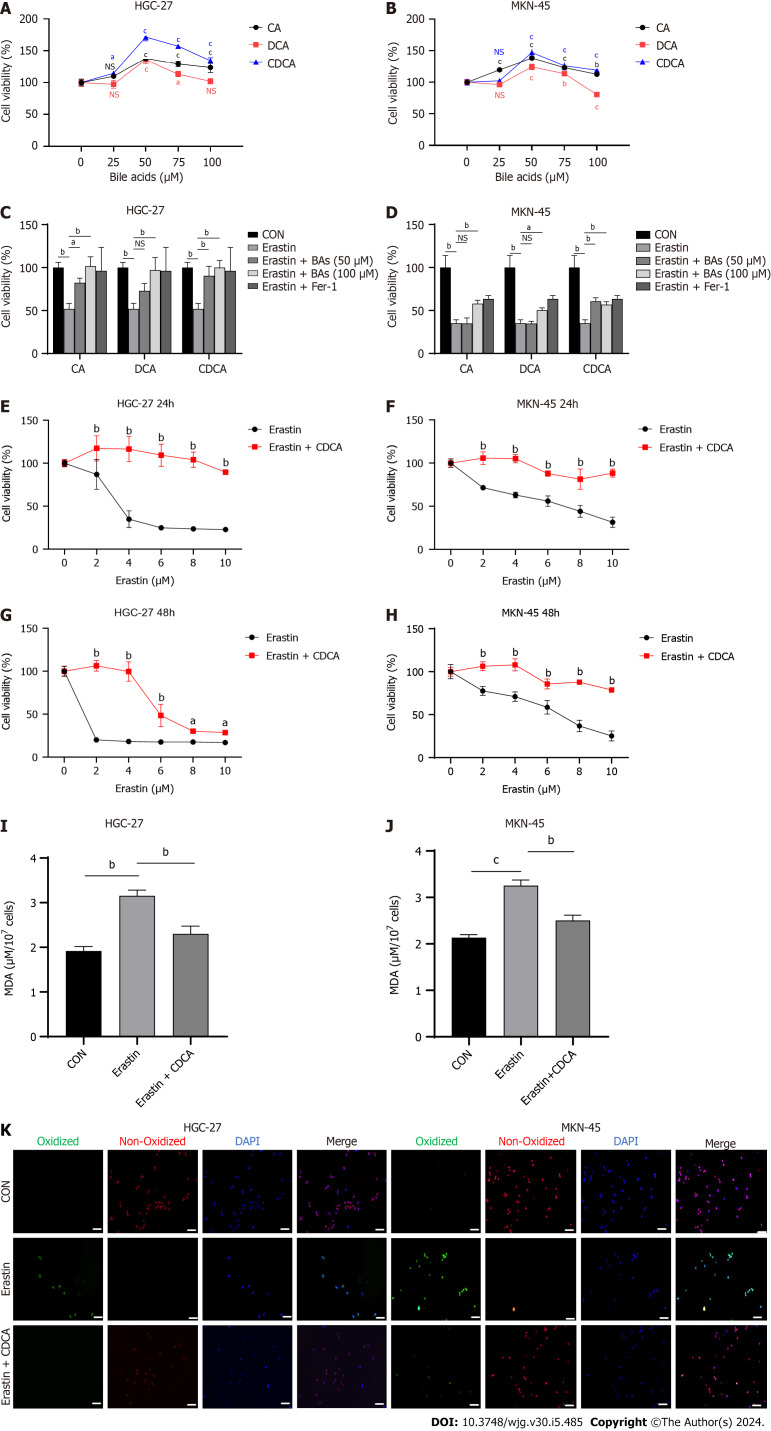Figure 1.
Bile acids enhanced proliferation and inhibited erastin-induced ferroptosis sensitivity in gastric cancer cells. A and B: Cell viability assay for HGC-27 and MKN-45 cells treated with three Bas; C and D: Cell viability assay for HGC-27 and MKN-45 cells treated with different concentration of BAs together with erastin (5 μM); E-H: Cell viability assay for two gastric cancer cell lines stimulated with erastin followed by chenodeoxycholic acid (50 μM) or control for 24 and 48 h; I and J: Malondialdehyde production in HGC-27 and MKN-45 cells; K: BODIPY-589/591 C11 staining to identify lipid reactive oxygen species in the cell lines under different treatments. Scale bar: 100 μm. aP < 0.05, bP < 0.01, cP < 0.001. These experiments were repeated three times. BAs: Bile acids; CA: Cholic acid; DCA: Dehydrocholic acid; CDCA: Chenodeoxycholic acid; MDA: Malondialdehyde; NS: Not significant.

